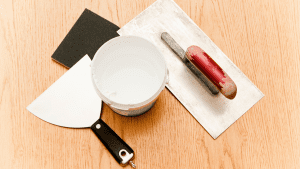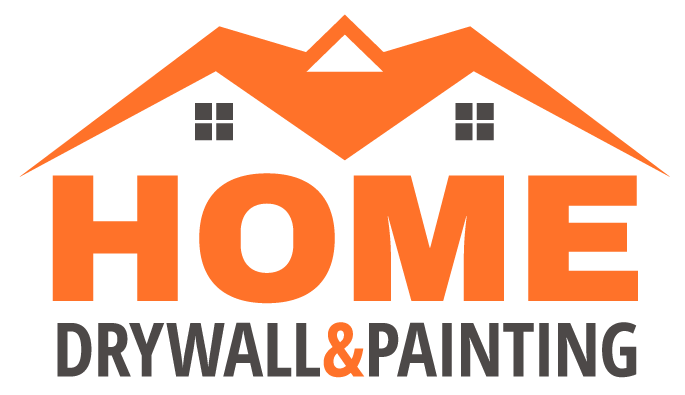Drywall Repair in Apple Valley MN | Different Types of Drywall Mud for Skim Coating
 Drywall is a type of building material used in construction and is made from gypsum plaster. It can be used on its own, or as an interior finish layer over liquid, lime-based plaster to produce the final wall surface. Drywall installation requires many labor-intensive tasks such as cutting panels to fit around electrical outlets, pipes and other structural elements. Drywall Repair in Apple Valley MN
Drywall is a type of building material used in construction and is made from gypsum plaster. It can be used on its own, or as an interior finish layer over liquid, lime-based plaster to produce the final wall surface. Drywall installation requires many labor-intensive tasks such as cutting panels to fit around electrical outlets, pipes and other structural elements. Drywall Repair in Apple Valley MN
Setting type drywall mud
Setting type drywall mud is the best choice for most applications. It’s durable, easy to sand and paint, and a good choice for ceilings. This type of mud is not a good choice for walls that will be textured or corners.
Lightweight drywall mud
- Lightweight drywall mud is a good choice for skim coating applications. It will dry fast and allow you to move on to the next step.
- Another benefit of lightweight mud is that it’s easy to work with and spreads easily, allowing you to apply a thin coat that won’t add too much weight to your drywall panels. This can help prevent sag over time, especially if you are using multiple layers of drywall compound or want a smoother surface than traditional plaster-based muds provide.
All purpose drywall mud
All purpose drywall mud is a good option for most jobs. It’s not the best choice for special situations, but it’s a safe bet if you’re unsure what type of mud to use. All purpose drywall mud has a consistency that makes it easy to apply, and it sands down nicely when you’re done. It cleans up easily, too—you can wipe away any excess with a damp rag or sponge without leaving behind any residue on your walls that will need additional cleaning later.
Topping compound
Topping compound, also known as final coat plaster, is a thick mixture of plaster that’s applied to the surface of a wall and left to dry for 24 hours before painting. Topping compound can be applied with either a trowel or roller, depending on the texture you want it to have.
When applying topping compound with a trowel, you will want to start at one end of your wall and work toward the other end in long strokes that are parallel with each other. This method helps ensure you apply an even layer across your entire surface area without leaving any streaks or bumps behind after it has dried. Once all areas have been covered with this thick layer of plaster (usually about 1/8th inch thick), it should dry within 24 hours so that you can paint over it! A local drywall installation company in Apple Valley Minnesota will help with your drywall repair and installation.
You can choose your best drywall compound to get things done.
The first thing you’ll need to know when choosing your drywall mud is whether you want a lightweight compound or an all-purpose type. Lightweight compounds are good for ceilings, since they’re lighter and easier to apply. This can be especially helpful if your ceiling has a lot of texture; the less weight you have on top of it, the better.
All-purpose compounds are best used on walls and floors because they offer better adhesion and coverage than lightweight compounds do. They’re also great for skim coating cracks in your wall or floors that would otherwise lead to problems down the line (like mold growth).
You should also consider topping compounds when selecting what type of drywall mud will work best for your project; these types of topcoats provide extra protection against moisture intrusion as well as add aesthetic value to any room that needs some sprucing up!
Conclusion
The drywall mud is one of the most important parts of the drywalling process. Different types of drywall mud are used for different purposes and different needs. The main purpose of these compounds is to act as a joint filler, which will be applied over the joint tape on both sides before taping the joints together. They are available in different forms including; setting type, topping compound or lightweight drywall mud etc. The best way to choose your ideal compound is based on its purpose, so make sure you know what type of application you need before making any final decisions! If you are wanting your drywall updated in your home, contact your trusted drywall contractors. Home Drywall and Painting in Apple Valley Minnesota can help with all your drywall and painting needs. We are your local experts in drywall installation and drywall repair. Reach out to us today to get on the schedule!
We offer Residential Drywall and Painting Services in the Following Cities of Minnesota:
Denver| Minneapolis | Roseville | St Paul | North St Paul | Coon Rapids | Brooklyn Park | Minnetonka | Edina | Woodbury | Lakeville | Eden Prairie | Fridley | Maplewood | Shoreview | Arden Hills | Mounds View | Maple Grove | Shakopee | Chanhassen | Rogers | Plymouth | Golden Valley | Victoria | Champlin | Chaska | Prior Lake | Savage | Hopkins | Andover | St Louis Park | New Brighton | Apple Valley | Burnsville | Ramsey | Anoka | Crystal | Ham Lake | Bloomington | Blaine | New Hope | Richfield | Spring Lake Park | Columbia Heights | Brooklyn Center | Eagan | Little Canada | Mendota Heights | Oakdale | Vadnais Heights | White Bear Lake | Stillwater | Centerville | Falcon Heights | Forest Lake | Gem Lake | Hugo | Lino Lakes | Lauderdale | Mahtomedi | North Oaks | Wyoming | Hudson | Lake Elmo | Grant | Bayport | Newport | Pine Springs | Inver Grove Heights | Rosemount | Orono | St Anthony | Circle Pines | East Bethel | Wayzata | Dellwood | Cottage Grove | Willernie | Pine City | Rush City | Stacy | North Branch | Harris | Cambridge | Braham | Mora | Ogilvie | Grantsburg WI | Siren WI| Sandstone | Finlayson | Willow River | Moose Lake | Sturgeon Lake | Hinckley | Mission Creek | Rock Creek | Bethel | St Francis | Isanti | Glendale | Edgewater | Lakewood
